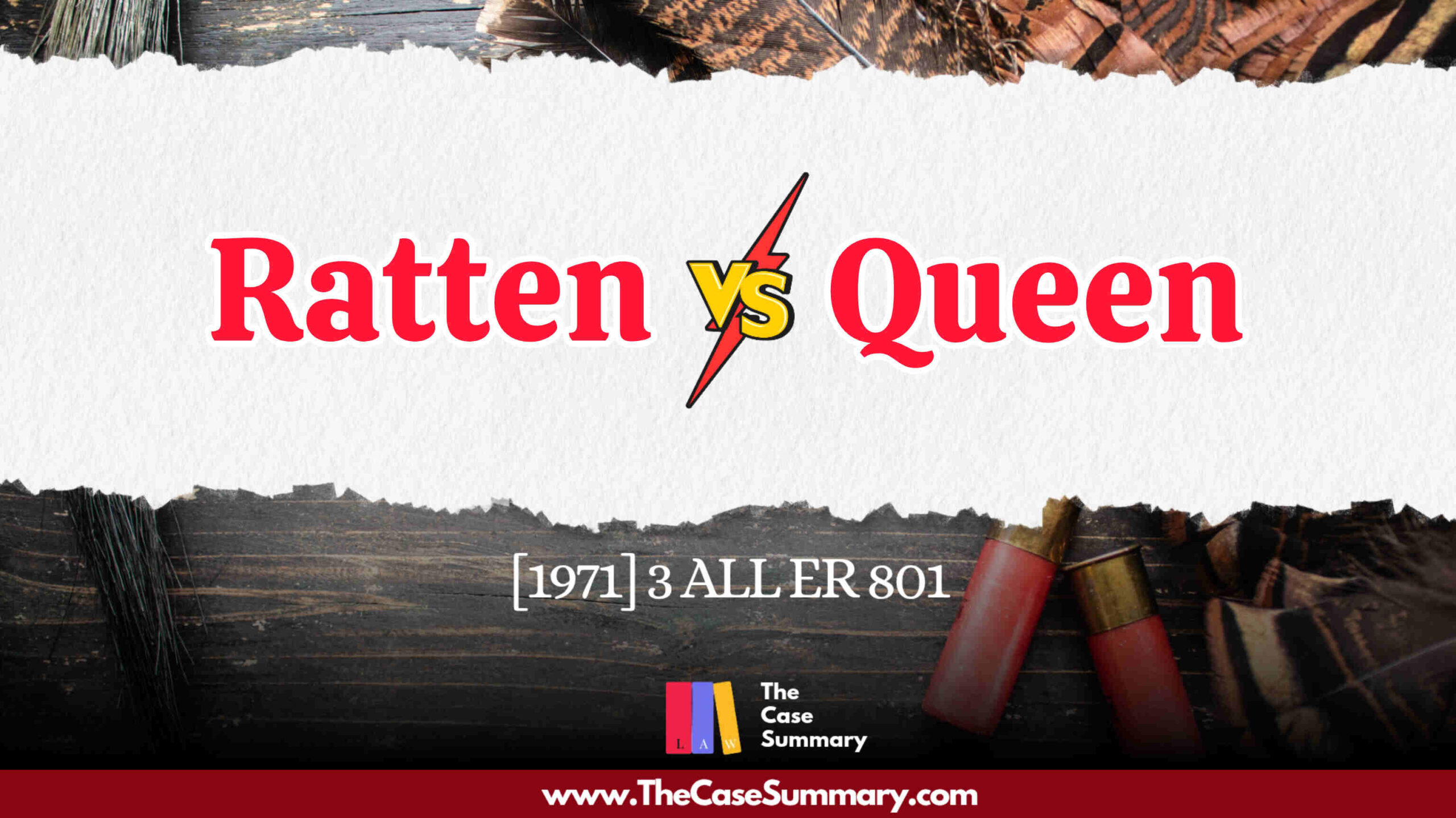Ratten vs Queen
Citation : [1971] 3 All ER 801
Jurisdiction : Australia
Appellant : Leith McDonald Ratten (Accused in the court of first instance)
Respondent: The Queen (Prosecutor in the court of first instance)
Facts :
The appellant was charged with the murder of his wife. The appellant had developed a relationship with another woman for over a year. The deceased was shot dead by a shotgun owned by the appellant on May 7, 1970, in the kitchen of their house. At 1:15 p.m. a phone call from that household was received by a telephonist, Miss Janet L Flowers, at the local telephone exchange. Miss Janet testified that the speaker on the other end had said, “Get me the police please!” and that the speaker had been hysterical. Miss Janet also testified that the speaker on the other side had a high-pitched voice and thus, was a female. The caller hung up the call shortly afterwards. After the police were informed, they telephoned the Ratten household at about 1:20 p.m. and spoke to Ratten. By this time his wife was already shot.
Ratten denied the murder charges and claimed that the firing of the shotgun was an accidental discharge while he was cleaning it. The police found two double-barrelled shotguns and one rifle along with cleaning materials in the kitchen. The shotgun which killed the victim was not generally used by Ratten and it was returned unloaded by a gunsmith after examination several months earlier and had not been used since then. Ratten failed to explain how it was loaded when he brought it to the kitchen for cleaning. Ratten claimed that the accounts of the telephonist qualified as hearsay and did not come under any of the recognized exceptions of the rule against hearsay. Thus, Ratten claimed that the statement of the telephonist was not admissible as evidence.
Issues :
1. Does the statement of the telephonist fall under the res gestae exception to the rule against hearsay?
2. Is the conversation between the telephonist and the victim, as narrated by the telephonist, admissible as evidence?
Decisions :
The Privy Council held that there was sufficient connection of place and time between the telephone conversation of the victim with the telephonist and her death from a gunshot wound. As Lord Wilberforce delivered, “The way in which the statement came to be made (in a call for the police) and the tone of voice used, showed intrinsically that the statement was being forced from the deceased by an overwhelming pressure of contemporary event.”
There was sufficient proximity and spontaneity for the phone call in which the victim showed signs of hysteria to be considered a part of the same transaction as the act of murder. Thus, the Privy Council held that the statement of the telephonist narrating her conversation with the victim minutes before her death fell under an exception to the rule against hearsay and was admissible as evidence. The appeal against the conviction of murder was dismissed.
Relevant Principle :
Rule Against Hearsay: When a witness testifies about something which he had come to know from someone else and had not witnessed personally, it is considered a hearsay. Hearsay is not admissible as evidence.
Doctrine of Res Gestae: When something is so closely connected with the main fact that the two can be considered parts of the same transaction, it is called res gestae and is admissible as evidence. Res gestae is an exception to the rule against hearsay.
Author :
1. S.M. Monzur Morshed
Note : The Case Summary is a platform by the law students, for the law students. We aim to summarize the facts and decisions of various important cases in both Bangla and English with utmost caution. However, this platform is in no way a replacement for going through the complete judgements by the law students and we discourage any learner from relying on case summaries alone. Thank you



